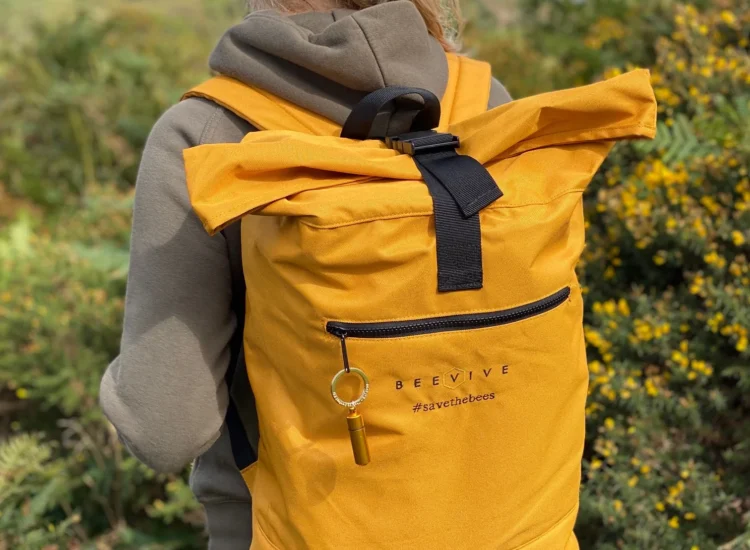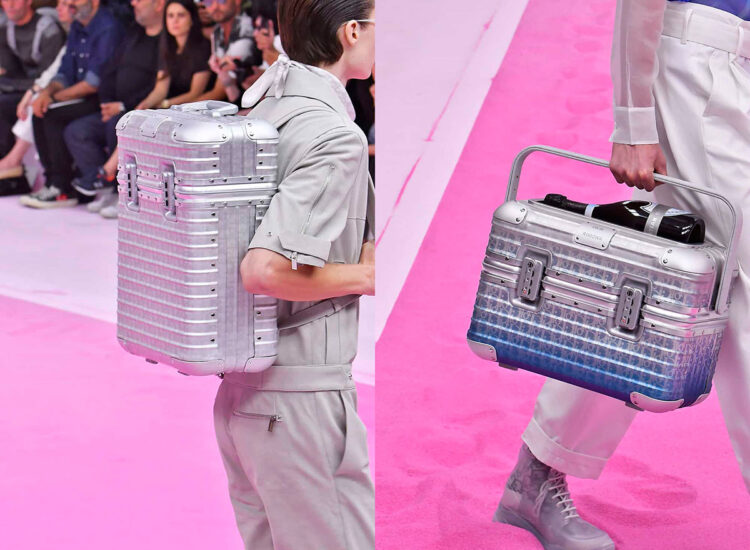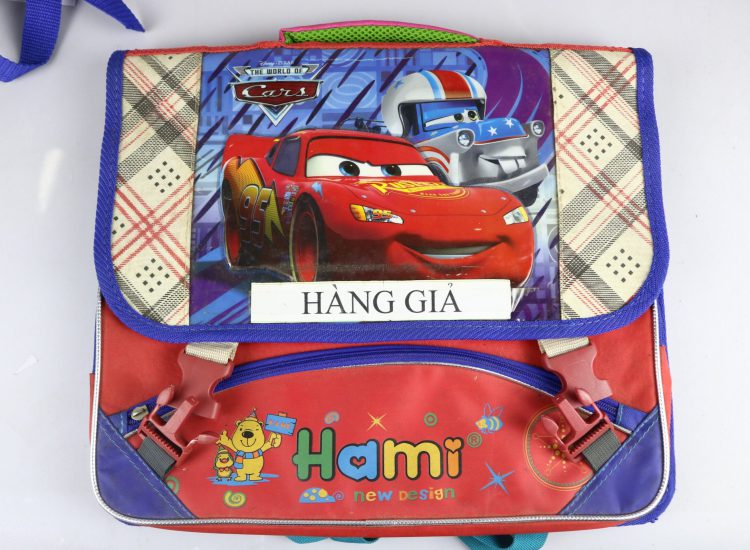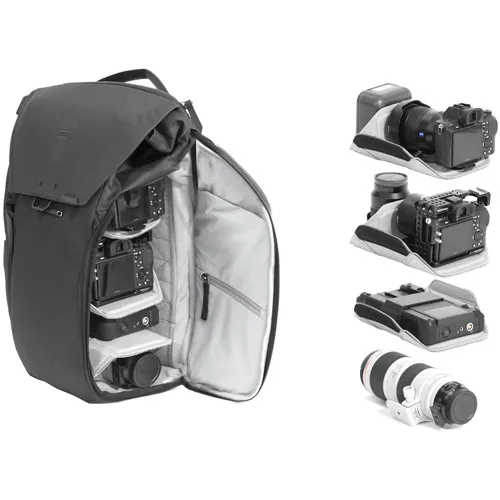Backpack Blunders: Common Mistakes to Avoid When Choosing Your Carry-All
1. Introduction: The Importance of Choosing the Right Backpack
A backpack is more than just a bag to carry your belongings; it’s an essential companion for students, travelers, hikers, commuters, and anyone who needs to transport items hands-free. The right backpack can make your load feel lighter, keep your belongings organized, and even prevent discomfort or injury. However, with a vast array of styles, sizes, and features available, choosing the perfect backpack can be a daunting task. Unfortunately, many people fall into common pitfalls during the selection process, leading to discomfort, inconvenience, and ultimately, a backpack that doesn’t quite meet their needs. Understanding these common mistakes is the first step towards making an informed decision and investing in a backpack that will serve you well for years to come.
Toc
2. Common Mistakes When Selecting a Backup
Choosing the wrong backpack can lead to a range of issues, from minor inconveniences to significant discomfort and even health problems. Here are some of the most common mistakes people make when selecting a backpack:
2.1. Ignoring the Intended Use
One of the most fundamental errors is failing to consider the primary purpose of the backpack. A backpack designed for hiking will have different features and construction compared to one intended for daily commuting or carrying schoolbooks. Using a small, lightweight daypack for a multi-day trek will likely result in discomfort and insufficient space, while a bulky hiking backpack might be overkill for a trip to the library. It’s crucial to identify whether you need a backpack for travel, school, work, hiking, sports, or general everyday use, as each activity demands specific features and design considerations.
2.2. Poor Size and Fit
The size and fit of a backpack are paramount for comfort and proper weight distribution. Many people mistakenly choose a backpack based solely on its capacity in liters without considering their torso length. A backpack that is too long or too short for your torso will not sit correctly on your hips, leading to strain on your shoulders and back. Similarly, choosing a backpack that is too large can tempt you to overpack, while one that is too small won’t accommodate your essentials. Understanding your torso length and the appropriate backpack size for your needs is essential for a comfortable carrying experience.
2.3. Neglecting Comfort Features

Comfort features are often overlooked, especially when aesthetics or price take precedence. However, features like padded shoulder straps, a supportive back panel, a comfortable hip belt, and a sternum strap are crucial for distributing weight evenly and preventing discomfort, especially when carrying heavier loads. Shoulder straps should be wide and well-padded to prevent digging into your shoulders. A padded back panel can provide cushioning and ventilation. A hip belt transfers a significant portion of the weight from your shoulders to your hips, which are better equipped to handle heavier loads. A sternum strap helps to stabilize the shoulder straps and prevent them from slipping. Ignoring these features can lead to shoulder pain, backaches, and an overall unpleasant carrying experience.
2.4. Overlooking Material and Durability
The material of a backpack significantly impacts its durability and ability to withstand wear and tear. Choosing a backpack made from flimsy or low-quality materials might seem like a cost-saving measure initially, but it can lead to rips, tears, and ultimately, the need for a replacement sooner rather than later. Consider the environment in which you’ll be using the backpack. For outdoor activities, look for durable, water-resistant materials like nylon or polyester with a higher denier rating. For everyday use, a balance of durability and aesthetics might be preferred.
2.5. Insufficient Compartments and Organization

A well-organized backpack can make a significant difference in convenience and efficiency. Many people underestimate the importance of having sufficient compartments and pockets for their belongings. A single large compartment can lead to items getting jumbled and difficult to find. Look for backpacks with dedicated compartments for laptops, tablets, water bottles, small accessories, and other essentials. Internal organizers and dividers can further enhance efficiency. The specific organizational needs will vary depending on the intended use of the backpack.
1. https://hami.vn/the-rise-of-recycled-backpacks-sustainable-style-and-functional-design/
2. https://hami.vn/chon-balo-cho-con-vao-lop-1-dau-tu-cho-suc-khoe-va-niem-vui-den-truong/
5. https://hami.vn/gieo-mam-tuong-lai-tam-quan-trong-cua-viec-cho-tre-hoc-ngoai-ngu-som/
2.6. Focusing Solely on Aesthetics
While it’s natural to want a backpack that looks good, prioritizing aesthetics over functionality and comfort is a common mistake. A stylish backpack that lacks essential comfort features or doesn’t meet your capacity needs will ultimately be a poor investment. It’s important to strike a balance between appearance and practicality. Fortunately, many manufacturers now offer backpacks that are both functional and aesthetically pleasing.
2.7. Ignoring Weight Capacity
Every backpack has a recommended weight capacity, and exceeding this limit can put undue stress on the seams, zippers, and straps, leading to premature wear and tear. Overloading a backpack can also strain your body, increasing the risk of injury. Consider the typical weight you’ll be carrying and choose a backpack with an appropriate weight capacity. If you frequently carry heavy items, look for backpacks with reinforced stitching and a robust suspension system.
2.8. Not Considering Accessibility

Accessibility refers to how easy it is to get items in and out of the backpack. Some backpacks have a top-loading design, which can make it difficult to reach items at the bottom. Others feature a clamshell opening, providing full access to the main compartment. Consider how frequently you’ll need to access your belongings and choose a backpack with an opening style that suits your needs. Additional access points, such as side zippers or front pockets, can also enhance convenience.
2.9. Lack of Weather Resistance
Depending on your activities and location, weather resistance can be a crucial factor. A backpack that is not water-resistant can leave your belongings vulnerable to rain and moisture, potentially damaging electronics, documents, and other sensitive items. Look for backpacks made from water-resistant materials or consider purchasing a separate rain cover for added protection, especially if you frequently travel or spend time outdoors.
2.10. Impulse Buying and Lack of Research
Making a hasty purchase without proper research or trying on different backpacks is another common mistake. The ideal backpack for you will depend on your individual needs and preferences. Take the time to read reviews, compare different models, and ideally, try on backpacks in person to assess their fit and comfort before making a decision.
3. How to Choose the Right Backpack: A Practical Guide
Avoiding these common mistakes is key to selecting a backpack that will meet your needs and provide years of comfortable and reliable use. Here’s a practical guide to help you make the right choice:
3.1. Identify Your Needs
Clearly define the primary purpose of the backpack. Will it be for school, work, travel, hiking, or general use? This will help you narrow down the type and features you need.
3.2. Measure Your Torso
Understanding your torso length is crucial for proper fit. Use a soft measuring tape to measure from the C7 vertebra (the prominent bone at the base of your neck) down to the top of your iliac crest (the top of your hip bones). Consult a backpack sizing chart to determine the appropriate size based on your torso length.
3.3. Prioritize Comfort Features
Look for padded and adjustable shoulder straps, a supportive back panel (ideally with ventilation), a comfortable hip belt that sits securely on your hips, and an adjustable sternum strap.
1. https://hami.vn/rimowa-the-epitome-of-luxury-travel-backpacks-where-durability-meets-design/
4. https://hami.vn/the-rise-of-recycled-backpacks-sustainable-style-and-functional-design/
5. https://hami.vn/chon-balo-cho-con-vao-lop-1-dau-tu-cho-suc-khoe-va-niem-vui-den-truong/
3.4. Consider Material and Durability
Choose materials that are appropriate for your intended use. For outdoor activities, opt for durable and water-resistant fabrics like nylon or polyester with a higher denier rating.
3.5. Evaluate Compartments and Organization
Select a backpack with the right number and type of compartments for your belongings. Consider dedicated sleeves for laptops and tablets, water bottle pockets, and smaller pockets for accessories.
3.6. Balance Aesthetics with Functionality
While appearance is a factor, prioritize functionality and comfort. Choose a backpack that meets your practical needs first and then consider the style and color.
3.7. Check Weight Capacity
Select a backpack with a weight capacity that can comfortably handle your typical load without exceeding its limits.
3.8. Assess Accessibility
Consider how you’ll need to access your belongings and choose a backpack with an appropriate opening style and additional access points if needed.
3.9. Consider Weather Resistance
If you’ll be using the backpack in wet conditions, opt for water-resistant or waterproof materials or consider a rain cover.
3.10. Do Your Research and Try It On
Read online reviews and compare different models. Ideally, visit a store to try on backpacks with some weight inside to assess their fit and comfort before making a purchase.
4. Conclusion: Investing in the Right Backpack for Comfort and Functionality
Choosing the right backpack is an investment in your comfort and convenience. By being aware of the common mistakes people make during the selection process and taking the time to carefully consider your needs and preferences, you can avoid ending up with a backpack that causes discomfort or doesn’t meet your requirements. Prioritizing fit, comfort features, durability, and functionality will ultimately lead you to a backpack that will be a reliable and valuable companion for all your carrying needs.










